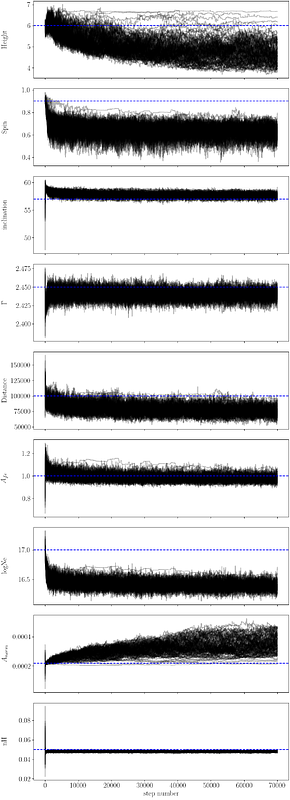RTFAST-Spectra: Emulation of X-ray reverberation mapping for active galactic nuclei

RTFAST-Spectra: Emulation of X-ray reverberation mapping for active galactic nuclei
Benjamin Ricketts, Daniela Huppenkothen, Matteo Lucchini, Adam Ingram, Guglielmo Mastroserio, Matthew Ho, Benjamin Wandelt
AbstractBayesian analysis has begun to be more widely adopted in X-ray spectroscopy, but it has largely been constrained to relatively simple physical models due to limitations in X-ray modelling software and computation time. As a result, Bayesian analysis of numerical models with high physics complexity have remained out of reach. This is a challenge, for example when modelling the X-ray emission of accreting black hole X-ray binaries, where the slow model computations severely limit explorations of parameter space and may bias the inference of astrophysical parameters. Here, we present RTFAST-Spectra: a neural network emulator that acts as a drop in replacement for the spectral portion of the black hole X-ray reverberation model RTDIST. This is the first emulator for the reltrans model suite and the first emulator for a state-of-the-art x-ray reflection model incorporating relativistic effects with 17 physically meaningful model parameters. We use Principal Component Analysis to create a light-weight neural network that is able to preserve correlations between complex atomic lines and simple continuum, enabling consistent modelling of key parameters of scientific interest. We achieve a $\mathcal{O}(10^2)$ times speed up over the original model in the most conservative conditions with $\mathcal{O}(1\%)$ precision over all 17 free parameters in the original numerical model, taking full posterior fits from months to hours. We employ Markov Chain Monte Carlo sampling to show how we can better explore the posteriors of model parameters in simulated data and discuss the complexities in interpreting the model when fitting real data.